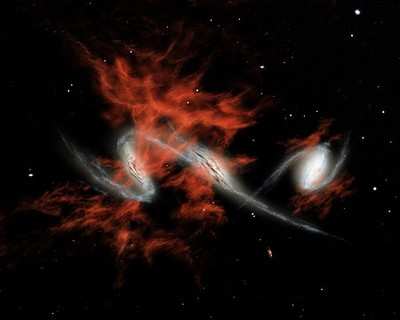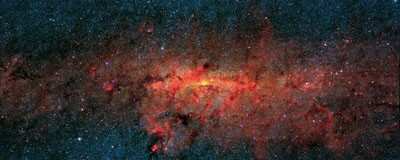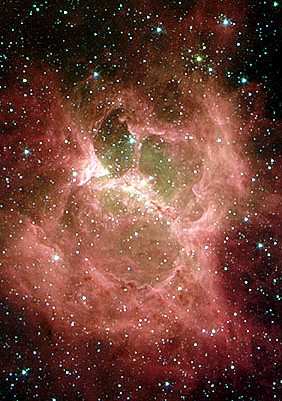Demystifying One Of the Oddest Space Phenomena
Astronomers have numerous technical terms and numbering systems
for describing the universe, but one type of mysterious object has
yet to be classified. For now, these oddities are named for their
strange appearance. They are called blobs.

Tuesday, at the 205th annual meeting of the American
Astronomical Society in San Diego, CA, astronomers presented new
evidence in the case of the giant galactic blobs. These blobs are
huge clouds of intensely glowing material that envelop faraway
galaxies. Using NASA's Spitzer Space Telescope and its powerful
infrared vision, the astronomers caught a glimpse of the galaxies
tucked inside the blobs. Their observations reveal monstrously
bright galaxies and suggest that blobs might surround not one, but
multiple galaxies in the process of merging together.
"It is possible that extremely bright galactic mergers lie at
the center of all the mysterious blobs, but we still don't know how
they fuel the blobs themselves," said Dr. Harry Teplitz, Spitzer
Science Center, California Institute of Technology, Pasadena, CA,
co-author of the new research. "It's like seeing smoke in the
distance and now discovering that it's a forest fire, not a house
or car fire, but still not knowing whether it was caused by
lightning or arson."
The findings will ultimately provide a better understanding of
how galaxies, including ones like our own Milky Way (below),
form.

Blobs were first discovered about five years ago with
visible-light telescopes. They are located billions of light-years
away in ancient galactic structures or filaments, where thousands
of young galaxies are clustered together. These large, fuzzy
galactic halos are made up of hot hydrogen gas and are about 10
times as large as the galaxies they encompass. Astronomers can see
glowing blobs, but they don't know what provides the energy to
light them up.
"To figure out what's going on, we need to better characterize
the galaxies at the center of the blobs," said Dr. James Colbert,
Spitzer Science Center, first author of the study.
That's where Spitzer comes in. Spitzer can sense the infrared
glow from the dusty galaxies inside the blobs. When Colbert and
colleagues used Spitzer to look at four well-known blobs located in
a galactic filament 11 billion light-years away, they discovered
that one of them appears to be made up of three galaxies falling
into each other -- an unusual cosmic event. The finding is
intriguing because previous observations from NASA's Hubble Space
Telescope found that another one of the four blobs surrounds a
merger between two galaxies. The astronomers speculate that all
blobs might share this trait; however, more evidence is needed to
close the case.

One clue that the scientists might be on the right track has to
do with the infrared brightness of the blob galaxies. To
visible-light telescopes, these galaxies appear unremarkable.
Spitzer measurements revealed that all four of the galaxies studied
are among the brightest in the universe, giving off the equivalent
light of trillions of Suns. Such luminous galaxies are often
triggered when smaller, gas-rich ones crash together, supporting
the notion that galactic mergers might make up the cores of
blobs.
Even if galactic mergers are fingered as the culprit, the
mystery of the giant galactic blobs will persist. Astronomers will
have to figure out why mergers are producing such tremendous clouds
of material.
"Far from solving the mystery of the blobs, these observations
only deepen it. Not only are the gas clouds bizarre, we now know
that they contain some of the brightest and most violent galaxies
in the universe," said Teplitz.
 ANN's Daily Aero-Term (05.01.24): Say Altitude
ANN's Daily Aero-Term (05.01.24): Say Altitude ANN's Daily Aero-Linx (05.01.24)
ANN's Daily Aero-Linx (05.01.24) Classic Aero-TV: Korean War Hero Twice Reborn
Classic Aero-TV: Korean War Hero Twice Reborn Airborne 04.29.24: EAA B-25 Rides, Textron 2024, G700 Deliveries
Airborne 04.29.24: EAA B-25 Rides, Textron 2024, G700 Deliveries Airborne Affordable Flyers 05.02.24: Bobby Bailey, SPRG Report Cards, Skydive!
Airborne Affordable Flyers 05.02.24: Bobby Bailey, SPRG Report Cards, Skydive!





